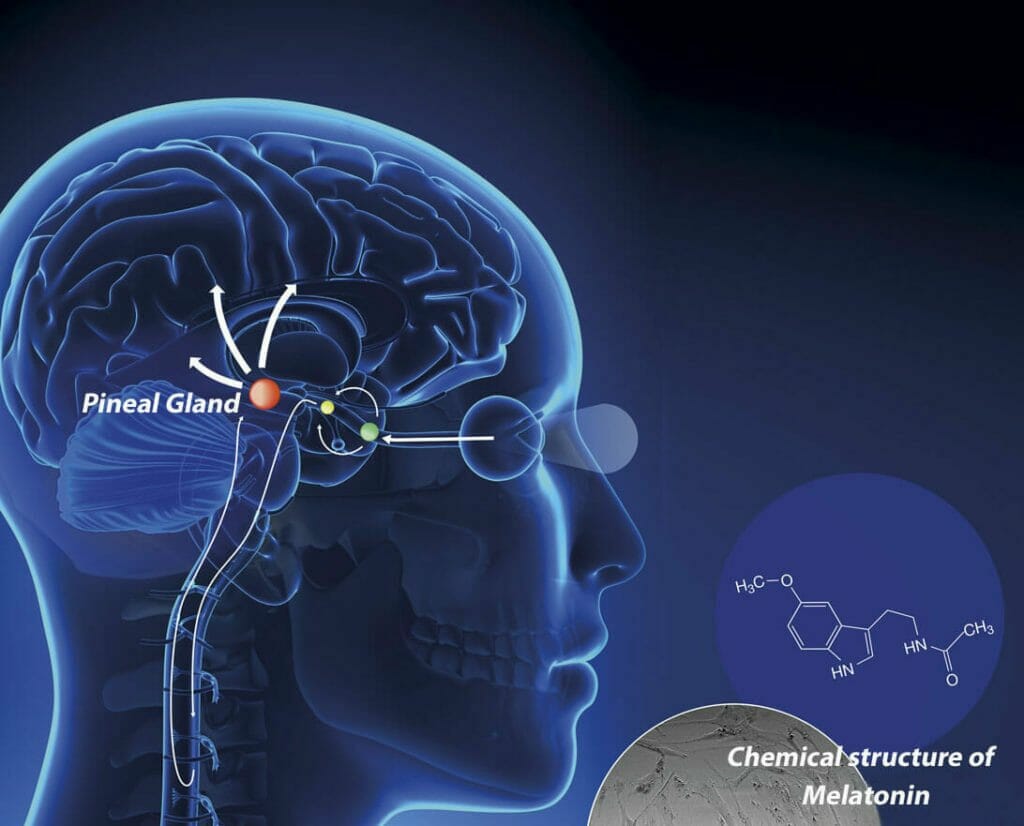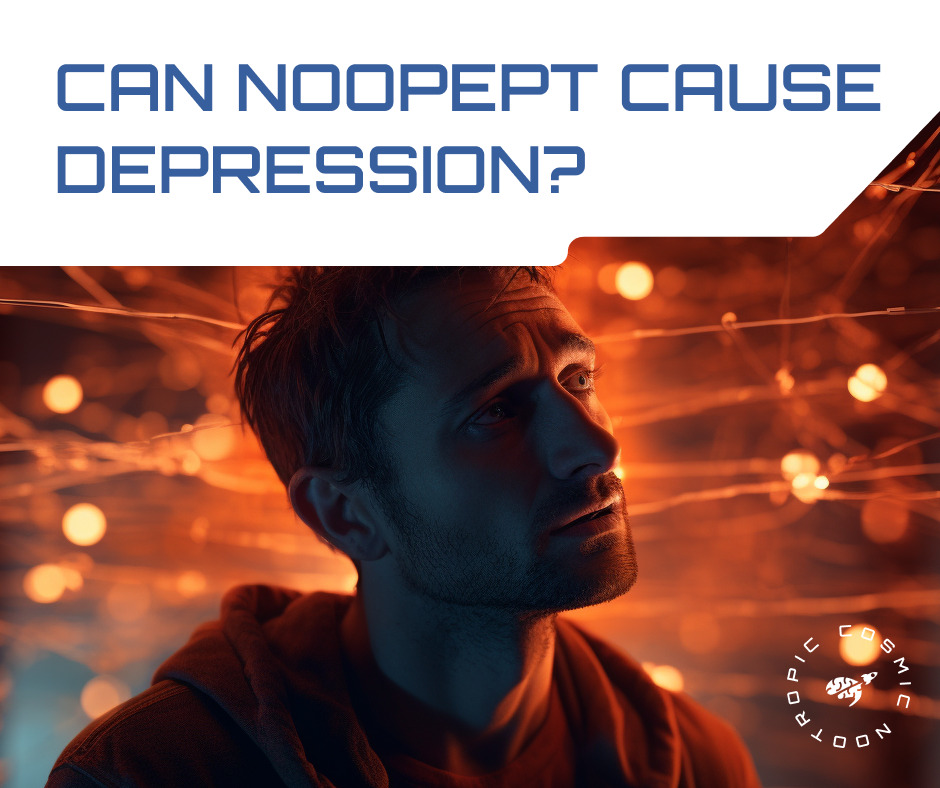What is Melatonin? A potent aid in the treatment of Covid-19 and Cancer
September 28, 2021

It is believed that the most important function of the pineal gland is the production of Melatonin. It is stimulated in the dark and inhibited by the light. The pineal gland is considered to be the biological clock of the body, and melatonin, like a pendulum, ensures the clock rate.
If the synthesis of melatonin is normal, the hormonal status of the body is stable. This means that the endocrine, immune, reproductive and nervous body systems function correctly, the process of cell proliferation and differentiation takes place without pathological changes, this reduces the risk of developing cancer and prolongs the active phase of healthy longevity.
If the pineal gland is unbalanced and does not produce melatonin and other hormones in sufficient quantities, hormonal disruption and imbalance in the work of organs and systems of the human body occurs, which entails accelerated aging and the development of diseases of various origins.
- Melatonin is responsible for the so-called circadian rhythms – the alternation of sleep and wakefulness. Therapeutic use of melatonin is advised in some cases of the circadian rhythm violations (night work, flights across the ocean, old age) and insomnia.
- Other functions of melatonin are also important. Melatonin is a strong immune modulator. It is involved in the regulation of cell proliferation and has an anticarcinogenic effect.
- The health of the reproductive and neuroendocrine systems including the obstacle to the development of oncology directly depends on the functioning of the pineal gland.
- Also the production of melatonin provides antioxidant protection, which reduces the level of oxidative stress, one of the markers of biological aging in the body.
Before the appearance of pineal gland peptides, the issue of insufficient production of melatonin was solved by the prescription of hormonal preparations containing synthetic melatonin in the form of a pure artificial hormone. There are also melatonin pills (Melarena) as well as sublingual melatonin sprays. But excessive use of exogenous melatonin is not recommended, since the excess of any hormone leads to the cessation of its own production in the body. Hence, we can conclude that a more optimal solution is to create conditions for the body to produce melatonin on its own.
Endogenous melatonin is produced by the pineal gland in the required amount, and affects the body in a beneficial and physiological manner, preventing the excess of optimal norms. Therefore, the intake of natural and safe pineal gland peptides (Endoluten, Pineamin, Epifamin) is becoming more and more popular among nootropic enthusiasts.
Endogenous melatonin as adjuvant therapy for COVID-19
Melatonin neurohormone (N-acetyl-5-methoxy-tryptamine) has attracted the attention of infectious disease specialists and epidemiologists as a promising agent for adjuvant therapy in patients with COVID-19.
The effects of endogenous melatonin as adjunctive therapy for COVID-19:
● antioxidant;
● anti-inflammatory;
● immunomodulatory.
Antioxidant effect of Melatonin
This effect helps the body to resist oxidative stress, both through the direct detoxification of reactive oxygen molecules (ROS), and indirectly through the stimulation of antioxidant enzymes and suppression of the activity of prooxidant ones. Today it is safe to say that melatonin is one of the most potent endogenous free radical scavengers.
Anti-inflammatory effect
In severe cases, SARS-CoV-2 causes an overproduction of pro-inflammatory cytokines, the so-called “cytokine storm”, leading to multiple organ failure. Experts note that melatonin is the only anti-inflammatory substance that blocks the activation of two main pathways of innate immunity, which are extremely important for the regulation of the severity of the immune response to infection: intranuclear kappa-B factor, a universal transcription factor that controls the expression of immune response genes; specific inflammasome NLRP3, which is a key trigger of an excessive immune response and is closely related to ARDS/ ALI. [14]
Melatonin immunomodulatory role
Melatonin also plays an extremely important role in the regulation of the immune system and belongs to the so-called “geroprotectors”. With age, the body’s ability to produce endogenous melatonin at night decreases, in women it coincides with menopause. There is a theory that a possible reason for the lower rate of COVID cases among children is due to their naturally high levels of this neurohormone.
Post-covid syndrome (“long covid”)
Many patients who recover from SARS-CoV-2 virus continue to experience a wide range of symptoms: fatigue, shortness of breath, brain fog, sleep disturbances, smell and taste disorders, periodic fever, anxiety, depression, etc. And these manifestations may last for quite a long period of time. Experts from the US National Institutes of Health (NIH) are actively studying the effects observed in many patients after the acute phase of SARS-CoV-2.
Endogenous melatonin is able to stop negative emotions and reduce anxiety, which is provoked by numerous stressors in the context of the new coronavirus infection. Restoration (even partial) of normal habits, sleep quality and reduction of anxiety with the help of melatonin can have a positive effect on public health during the COVID-19 pandemic.
Can melatonin be used to treat COVID-19?
The use of melatonin in persons with obesity and chronic diseases, such as diabetes are of particular interest because they are subject to more severe symptoms because of reduced immunity, low levels of antioxidants, and excessive inflammatory responses. One Spanish study examines the preventive administration of melatonin in ICU patients suffering from COVID-19. [15] The results are yet to come, but the possibility of using melatonin as an adjuvant therapy drug against the new coronavirus infection appears to be very promising.
Luminous pollution and Cancer

Light pollution – the excess artificial lighting in the evening and at night – affects 62% of the world’s population. The exact degree of the light exposure which may cause cancer is not yet established. However, the fact that this is a new risk for our civilization and for environmental pollution is beyond doubt.
Going to sleep early, not watching TV before bed, not lying in bed with a smartphone – this advice is quite old hat. What difference does it make when you go to bed if you get enough sleep? What’s the harm in scrolling through social media feeds before bedtime? And how is this all related to the development of cancer?
When a person looks at a light source, a signal through the retina of the eye reaches the hypothalamus, which in turn makes a decision – to coordinate the body’s work in the “day mode”. Professor Yvan Touitou a French chronobiologist explains that the light lowers the synthesis of enzymes involved in the production of melatonin. [11] The most harmful light is blue, which comes from a smartphone, a computer or a TV.
Disruption of melatonin production leads to sleep disturbances. This, in turn, increases the risk of obesity, impaired insulin production and, as a result, diabetes, cardiovascular disease and cancer.
One of the many experiments on mice regarding this subject conducted by French scientists in 2009 showed the following results: they simulated conditions similar to jet lag (every two days the daylight hours shifted by eight hours), which caused the growth of tumors in the mice. [5]
Eva Schernhammer from Harvard Medical School and her colleagues conducted a series of studies associated with night-shift work and melatonin disruption. Studies have shown that nurses working in shifts had an increased risk of breast cancer, and the longer their experience, the higher the risk was. Rotating-shift workers on night shifts had greater light exposure and lower urinary melatonin levels during the night compared with day-shift workers. [12] [4]
The research on melatonin in the fight against cancer and aging is quite promising. However medical scientists caution enthusiasts against falling into melatonin madness. Undoubtedly it is an important and useful molecule, but it’s just one of the thousands of hormones and active substances that are produced in the body.
If you want to do a favor to your body, first of all, doctors advise to follow the normal daily routine:
● It is necessary to fall asleep at about 11 pm and in the darkness;
● Avoid even a short-term exposure to light at night: turn off lamps, TV, smart-phones and computer;
● Replace the night light in the toilet with a dim red light (the safest light for melatonin production);
Factors that reduce the synthesis of melatonin: caffeine, bad habits (cigarettes, alcohol), uncontrolled medication.
Delve into discussion on Reddit!
Bibliography
- Lissoni P et al (1995). Immuno Endocrine therapy with low-dose subcutaneous interleukin-2 plus melatonin of locally advanced or metastatic endocrine tumors. https://pubmed.ncbi.nlm.nih.gov/7854778/
- Semicheva TV, Garibashvili AY (2000). Epiphysis: modern data about its physiology and pathology. https://www.probl-endojournals.ru/jour/article/view/11864#
- Khavinson V.Kh. (2002). Peptides and ageing. https://khavinson.info/publications
- Eva S Schernhammer et al (2003). Night-shift work and risk of colorectal cancer in the nurses’ health study. https://pubmed.ncbi.nlm.nih.gov/12783938/
- Elisabeth Filipski et al (2004). Effects of chronic jet lag on tumor progression in mice. https://pubmed.ncbi.nlm.nih.gov/15520194/
- Padhi A. et al. (2014). Antimicrobial peptides and proteins in mycobacterial therapy: Current status and future prospects. https://pubmed.ncbi.nlm.nih.gov/24813349/
- Dyakonov VV (2015). The use of Ovariamin and Epifamin for the normalization of ovarian function in women with climacteric disturbances. https://cyberleninka.ru/article/n/primenenie-ovariamina-i-epifamina-dlya-normalizatsii-funktsii-yaichnikov-u-zhenschin-s-klimaktericheskimi-rasstroystvami/viewer
- Zvereva Ye. Ye., Bessalova Ye.Yu (2016). A History Of Pineal Gland Researching: Between Mythology And Science. https://cyberleninka.ru/article/n/istoriya-izucheniya-shishkovidnogo-tela-mezhdu-mifologiey-i-naukoy/viewer
- Prilepskaya V.N. (2017). Climacteric syndrome: novel modalities for menopausal therapy. https://geropharm.ru/uploads/multimedia/parsed/pdf/88c305449c44b4ce96769e1c35d09455.pdf
- Trofimova SV et al (2017). Pineamin increases the synthesis of melatonin in the pineal gland in elderly people. https://khavinson.info/assets/files/russ/2017-trofimova.pdf
- Yvan Touitou et al (2017). Association between light at night, melatonin secretion, sleep deprivation, and the internal clock: Health impacts and mechanisms of circadian disruption. https://pubmed.ncbi.nlm.nih.gov/28214594/
- Eva S Schernhammer et al (2019). Shift Work, Chronotype, and Melatonin Rhythm in Nurses. https://pubmed.ncbi.nlm.nih.gov/31142495/
- Yureneva SV et al (2020). The results of an open-label comparative randomized controlled clinical trial of the use of combined treatment including Pineamin in postmenopausal women. https://geropharm.ru/uploads/multimedia/gerofarmyurenevaakush2202.pdf
- Reiter R. et al (2020). Melatonin Inhibits COVID-19-induced Cytokine Storm by Reversing Aerobic Glycolysis in Immune Cells: A Mechanistic Analysis. https://www.researchgate.net/publication/341292203_Melatonin_Inhibits_COVID-19-induced_Cytokine_Storm_by_Reversing_Aerobic_Glycolysis_in_Immune_Cells_A_Mechanistic_Analysis
- Acuña-Castroviejo D et al (2020). Clinical trial to test the efficacy of melatonin in COVID-19. https://pubmed.ncbi.nlm.nih.gov/32770854/
- Vlachou M et al (2021). Pineal hormone melatonin as an adjuvant treatment for COVID‑19 (Review). https://www.researchgate.net/publication/349150862_Pineal_hormone_melatonin_as_an_adjuvant_treatment_for_COVID-19_Review



